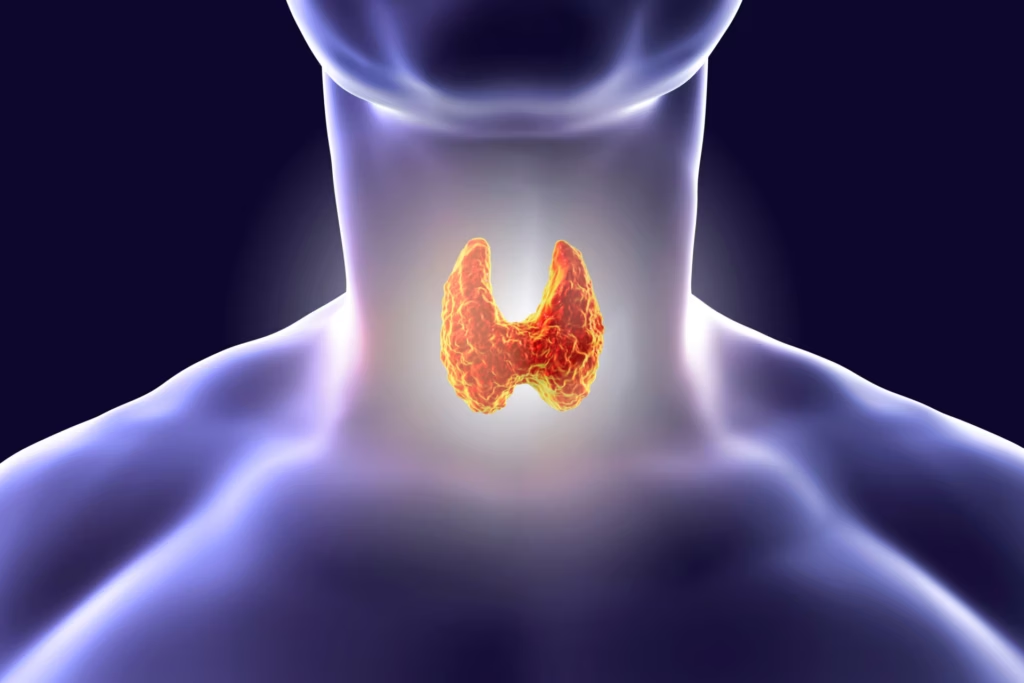Search Results
Showing Results for precision medicine

Thyroid eye disease (TED), also known as Graves’ orbitopathy, is a complex autoimmune disorder driven by an interplay of immune cells, orbital fibroblasts and tissue remodelling factors that lead to inflammation, oedema and, ultimately, potential vision loss.1 While the disease ...

Dr Svenja Nölting shares how her international experiences and dedicated mentors shaped her career in neuroendocrine oncology, discusses the profound impact of hormones on the body, and highlights the future of precision medicine in tailoring treatments for endocrine disorders.

Watch four leading experts discuss how AI is transforming the clinical management of paediatric endocrine disorders including growth hormone disorders.

New research, published in the Nature journal, Communications Medicine has identified rare genetic variants that may contribute to the increased prevalence of type 2 diabetes (T2D) in multiple generations of Asian Indian families.1 The findings could provide new insights into ...

It is with great pleasure that we present this latest issue of touchREVIEWS in Endocrinology, which brings together a diverse array of high-quality articles focused on the evolving landscape of endocrine disorders. The importance of patient-centred care is exemplified in ...

Thyroid nodules are common worldwide, and their prevalence is increasing. Most nodules are asymptomatic and detected incidentally on cross-sectional imaging or physical examination. In rare cases (10–15%), nodules are malignant and require diagnostic evaluation. Even malignant nodules frequently show non-aggressive behaviour.1 ...

The pioneering work carried out by the French scientist Alfred Jost in the mid-20th century clearly showed that, in the mammalian foetus, the internal and external genitalia virilize whenever the undifferentiated gonads develop into testes, whereas they undergo the ...

Obesity defined as abnormal or excessive fat accumulation that presents a risk to health, is a chronic disease linked to metabolic co-morbidities, such as type 2 diabetes mellitus and cardiovascular disease, a reduced life expectancy, economic burden and reduced quality of ...

Acromegaly is a rare, slowly progressive, acquired disorder that affects adults. It occurs when the pituitary gland produces too much growth hormone (GH). touchENDOCRINOLOGY were delighted to speak with Prof. Thierry Brue (Aix-Marseille University, Marseille, France) about the current treatment ...

Article highlights Epigenetics refers to the heritable changes in DNA expression without changes in the genetic code. Epigenetic changes are brought about by post-translational modifications of histone proteins, covalent modifications of DNA bases and microRNA. Epigenetics explains how environmental milieu ...

The 82nd ADA meeting, June 3-7, 2022, hosted a debate surrounding targets for diabetes management being body weight or glycaemic control. Dr Osama Hamdy (Joslin Diabetes Center, Boston, MA, USA) discusses the array of phenotypes with which diabetes presents, with precision ...

Deep Dutta is a Senior Endocrinologist at the CEDAR Super-specialty Clinics New Delhi in India. Following his MBBS (in 2005) and MD (in 2009), he completed his Doctorate in Endocrinology (DM) training in endocrinology and metabolism in Calcutta, India in 2012. He was ...

Globally, non-communicable diseases (NCDs) are currently the leading cause of mortality and morbidity. Of the 56.4 million global deaths in 2015, nearly 39.5 million (70%) were due to NCDs.1 Mental health disorders are one of the known major contributors to NCD burden. They are ...

Self-monitoring of blood glucose (SMBG) levels was the standard of care for achieving tight glycaemic control in patients with diabetes for several decades. Systems for continuous glucose monitoring (CGM) were introduced around 15 years ago and are employed by an increasing ...

Current Therapy of Retinal Vascular Disease Current Therapy of Retinal Vascular Disease Retinal vascular disorders are commonly found in ophthalmological practice: in addition to hypertensive changes and retinal vein occlusions, diabetic eye disease play a major role. Driven by demographic ...

Globally, type 2 diabetes has reached epidemic proportions and is associated with an increased risk for cardiovascular disease (CVD) and premature mortality. The total number of people with diabetes worldwide is projected to rise from 366 million in 2012 to 552 million in 2030.1 In 2012, ...

Globally, type 2 diabetes has reached epidemic proportions and is associated with an increased risk for cardiovascular disease (CVD) and premature mortality. The total number of people with diabetes worldwide is projected to rise from 366 million in 2012 to 552 million in 2030.1 In 2012, ...
Latest articles videos and clinical updates - straight to your inbox
Log into your Touch Account
Earn and track your CME credits on the go, save articles for later, and follow the latest congress coverage.
Register now for FREE Access
Register for free to hear about the latest expert-led education, peer-reviewed articles, conference highlights, and innovative CME activities.
Sign up with an Email
Or use a Social Account.
This Functionality is for
Members Only
Explore the latest in medical education and stay current in your field. Create a free account to track your learning.

